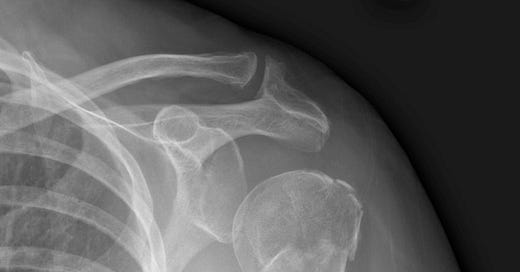Humeral head and neck fractures result from a fall on an outstretched hand, and are typically seen in elderly women. In younger patients, they are the consequence of high-energy trauma and usually associated with other major injuries. Patients present with shoulder pain, swelling, tenderness, crepitus, and ecchymosis. Sensory disturbance, paresthesia, and diminished pulses indicate axillary nerve or artery injury.
Radiographs should be obtained in AP, transscapular, and (if possible) axillary views. Articular surface fractures associated with a hemarthrosis may show inferior humeral head subluxation relative to the scapular glenoid (pseudosubluxation).
Pseudosubluxation. Nondisplaced (one-part) fractures of the humeral neck and greater tuberosity. The humeral head is inferiorly subluxed due to an associated hemarthrosis. Because none of the fragments are separated by more than 1 cm, this is considered a one-part fracture.
The Neer classification system divides the proximal humerus into four parts, which are located between the epiphyseal lines where fractures primarily occur: the anatomic neck, the surgical neck, and the greater and lesser tuberosities. Fragments are considered displaced if separated by more than 1 cm or > 45° angulation. A one-part fracture contains no displaced fragments, regardless of the number of fracture lines. Two-part, three-part, and more severely comminuted fractures are character- ized by progressively greater displacement and angulation of the small fragments.
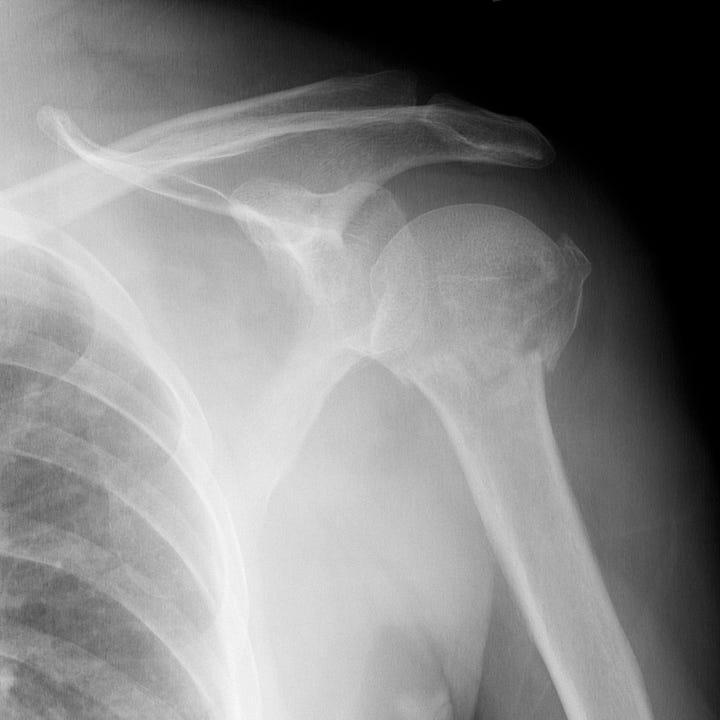
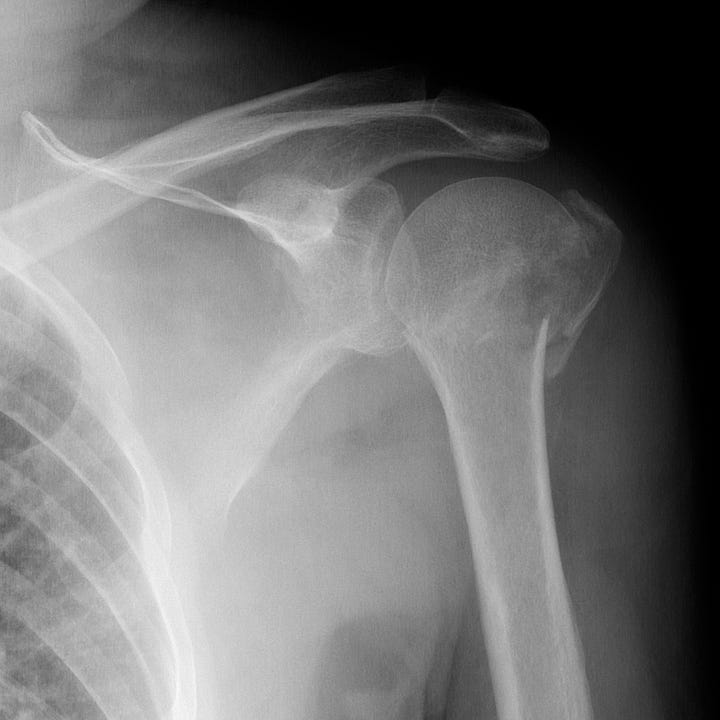
One-part humeral head fracture. Transverse, slightly impacted surgical humeral neck fracture with minimal displacement of the greater tuberosity. No fragments are separated by more than 1 cm, nor is there significant angulation of any fragment.
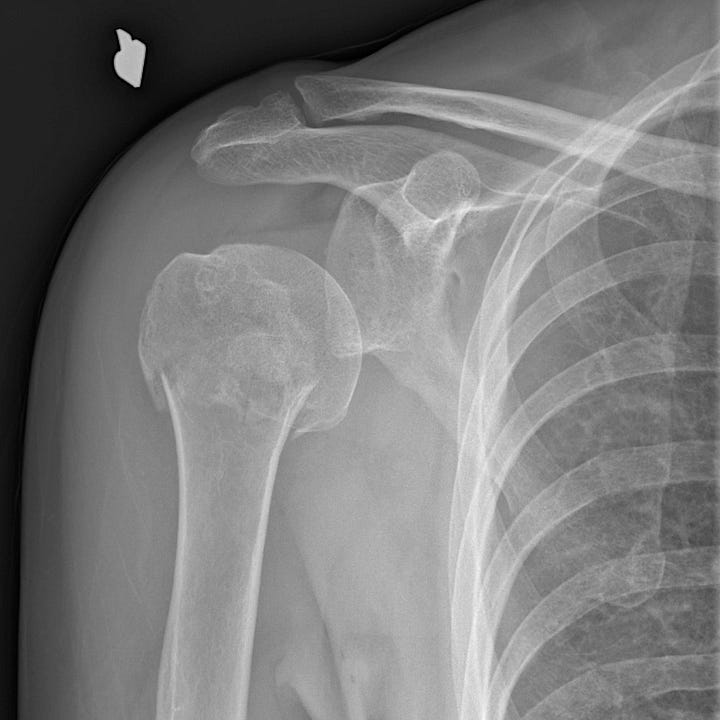
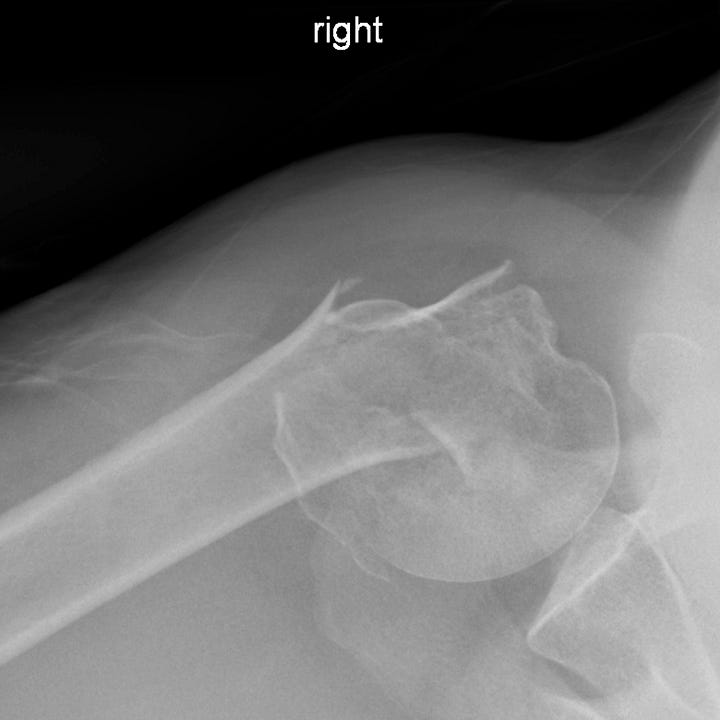
Two-part humeral head fracture. Impacted fracture of the surgical humeral neck with ~ 90° angulation of the humeral head with respect to the shaft.
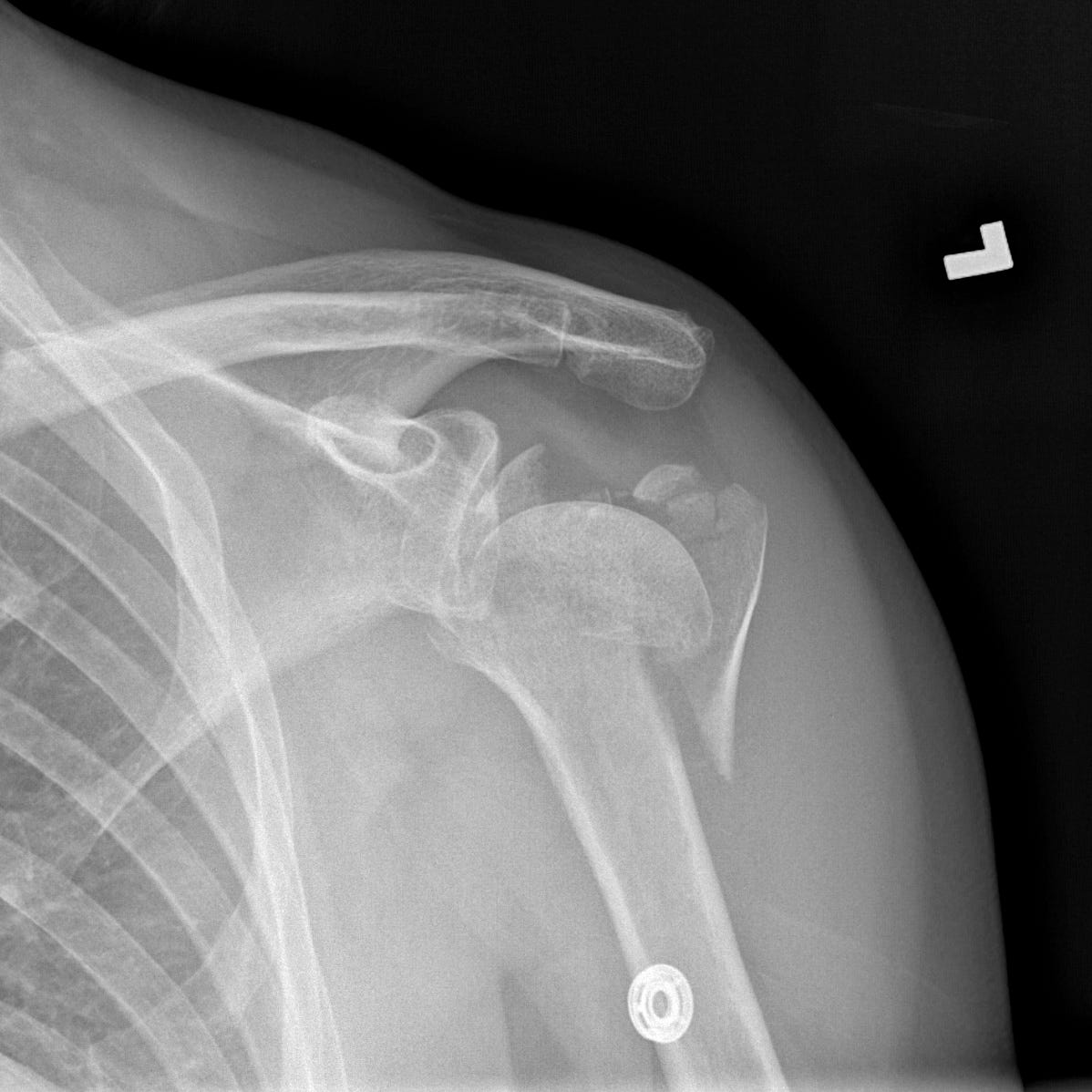
Three-part humeral head fracture. Displaced fractures with separation and displacement of the diaphysis, medial humeral head, and greater tuberosity.
One-part fractures are treated with immobilization and analgesics, but all other proximal humeral fractures require urgent orthopedic consultation in the emergency department because of the high risk of complications. Closed reduction, operative fixation, or a combination of the two may be necessary.

